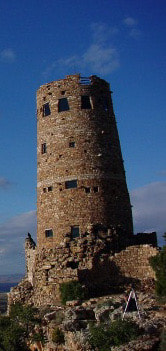Micah 4:8 is a telling scripture, for, in my view, it unequivocally places the temple at the Ophel in Zion!
Micah has been prophesying a latter day reign of the Lord from Zion and says, that many will say, “come and let us go up to the mountain of the Lord, to the ‘bethel’ (house of God) of Jacob…etc”
And then Micah says about those who go up and about the lame and outcast who gather there, “the Lord will reign over them in Mount Zion…and you O watchtower of the flock, the Ophel (stronghold) of the daughter of Zion, to you it shall come, the kingdom of the daughter of Jerusalem.”
(The ‘daughter of Zion’ is simply the township birthed out of Zion or the City of David; see 1 Chronicles 11:5)
Here Micah uses the Hebrew term 'migdal eder' to describe the temple. Migdal eder means the watchtower of the flock. Across the landscape in Israel, watchtowers were used for military and civil purposes. They were in vineyards, at strategic military positions and on city walls. A most famous watchtower was near Bethlehem where the lambs for the sacrificial system in Jerusalem were prepared—and where Jesus was born, the sacrificial Lamb who was destined to take away the sin of the world!
But, it is clear here that Micah sees the temple as a migdal eder, the watchtower over the flock of God, the people of Zion and Jerusalem—and tellingly he uses the word Ophel, which defines that area of rising ground beginning just above Gihon and rising northward.
(Incidentally, Isaiah also uses the same imagery for the temple in Isaiah 5:1-2 ‘Now let me sing to my Well-beloved A song of my Beloved regarding His vineyard: My Well-beloved has a vineyard On a very fruitful hill. He dug it up and cleared out its stones, And planted it with the choicest vine. He built a tower (migdal) in its midst, And also made a winepress in it; So He expected it to bring forth good grapes, But it brought forth wild grapes)
Pictured are typical watchtowers of the period


 RSS Feed
RSS Feed
